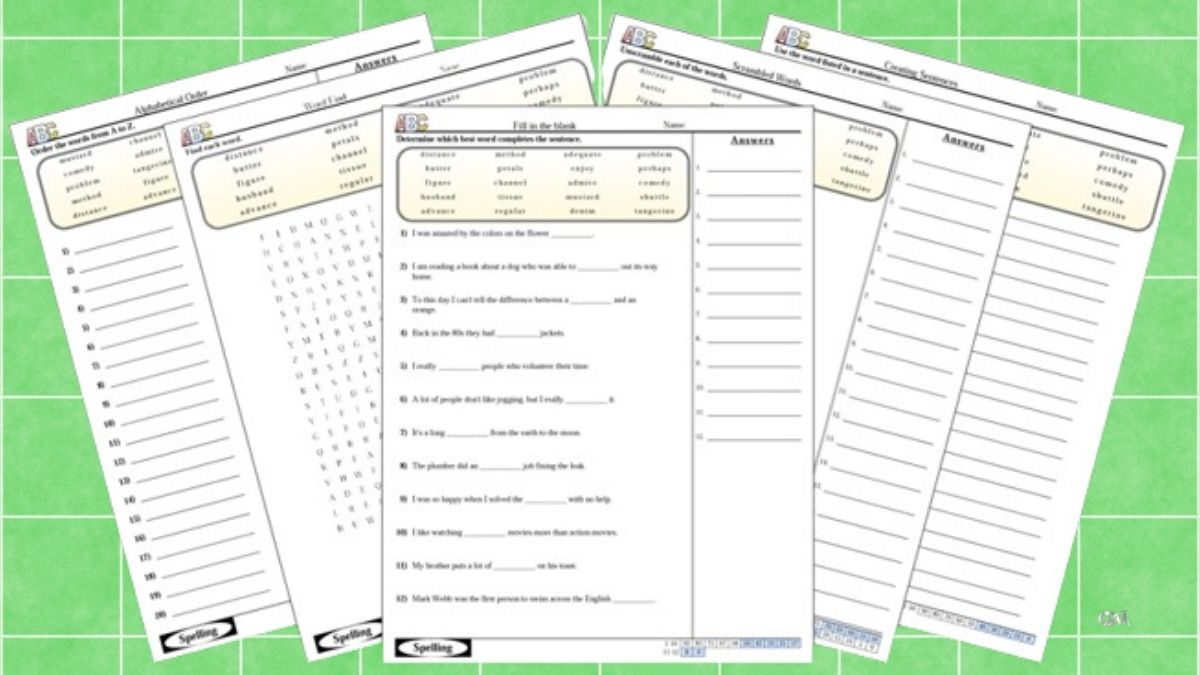Education
Coefficient Of Variation Calculator

Coefficient Of Variation Calculator: Welcome to the universe of measurements, where numbers recount stories and guide choices. One urgent measurement in factual examination is the coefficient of variety (CV). Whether you’re a carefully prepared analyst or simply plunging your toes into the domain of information, understanding and working out CV can give important experiences into the inconstancy of your informational collections.
Understanding Coefficient of Variation
The coefficient of variety (CV) is a factual measure that communicates the level of variety corresponding to the mean of an informational index. It’s especially valuable while looking at the changeability of various informational indexes with particular units or scales. The recipe for ascertaining CV is clear:
CV=(Standard Deviation ÷ Mean)×100
Using the Coefficient of Variation Calculator
Coefficient Of Variation Calculator: Because of present day innovation, working out the coefficient of variety has never been simpler. With the CV number cruncher, you can quickly acquire precise outcomes without the problem of manual calculation. This is the secret:
- Enter your pieces of information into the assigned field. Edelvives Digital
- The number cruncher consequently processes the mean and standard deviation.
- The CV worth is then shown, giving you prompt bits of knowledge into the fluctuation of your information.
Coefficient Of Variation Calculator: Interpretation of Results
When you have your CV worth, interpretting its implications is fundamental. A higher CV demonstrates more prominent relative changeability, while a lower CV recommends more consistency around the mean. How about we dig into a few functional guides to outline this:
Model 1: In a monetary portfolio, a CV of 15% suggests moderate gamble, though a CV of 5% implies lower unpredictability.
Model 2: In natural examinations, a CV of 20% in cell size estimations might demonstrate significant changeability, while a CV of 2% recommends more prominent consistency.
Benefits of Using the Calculator
The CV number cruncher offers various benefits in factual examination:
Effectiveness: Saves time and exertion via robotizing complex computations.
Dynamic guide: Enables leaders with quantifiable experiences into information changeability.
Limitations of CV Calculator
While the CV number cruncher is a significant device, recognizing its limitations is fundamental:
Setting explicit contemplations: Results might fluctuate relying upon the idea of the information and its basic dispersion.
Elective measures: at times, elective proportions of fluctuation might give corresponding bits of knowledge, for example, the interquartile reach or coefficient of scattering.
Coefficient Of Variation Calculator: Applications in Different Fields
The adaptability of the coefficient of variety reaches out across different areas:
Money and speculation: Evaluating the gamble and return profile of venture portfolios.
Science and medication: Assessing the consistency of organic estimations and clinical results.
Quality control in assembling: Checking the changeability of creation cycles to guarantee item quality and consistency.
Conclusion
All in all, the coefficient of variety number cruncher is an important resource in the tool stash of analysts, scientists, and chiefs. By giving a quantitative proportion of fluctuation, it works with informed navigation and improves the effectiveness of factual investigation.
FAQs
Q: What is the coefficient of variety utilized for?
The coefficient of variety is utilized to gauge the general fluctuation of informational collections with various units or scales. It surveys the consistency or scattering of information around the mean.
Q: How would I decipher a high coefficient of variety?
A high coefficient of variety demonstrates more noteworthy relative fluctuation in the informational index. This infers that the information focuses are more fanned out from the mean, recommending higher gamble or instability.
Q: Might the coefficient of variety at any point be negative?
No, the coefficient of variety can’t be negative since it is a proportion of two non-negative numbers (standard deviation and mean) increased by 100 percent.
Q: Is the coefficient of variety impacted by exceptions?
Indeed, exceptions can impact the coefficient of variety since it depends on the standard deviation, which is delicate to outrageous qualities. Nonetheless, it might in any case give important bits of knowledge into the changeability of the informational collection.
Q: When would it be a good idea for me to utilize the coefficient of variety mini-computer?
You can utilize the coefficient of variety number cruncher at whatever point you really want to evaluate the general inconstancy of informational indexes rapidly and precisely, particularly while managing information of various units or scales.
Education
Käöntöjä: A Journey of Language and Culture

The historically and culturally significant language of Käöntöjä has lately gained global notice. Learn Käöntöjä and get to know its history, significance, advantages, disadvantages, and potential for the future in this in-depth essay.
Understanding the Origins of Käöntöjä
Käöntöjä has been around since ancient times, when it was a way for people to communicate with one another. It developed through the years, taking on the traits and linguistic subtleties of its speakers as they were exposed to other cultures and languages.
The Importance of Käön’töjä in Modern Society
The importance of Käön’töjä in today’s interconnected society is immense. It unites people of different backgrounds and helps them better understand and appreciate one another’s cultures. Foreign diplomacy, commercial discussions, and cultural interactions all rely heavily on Käön’töjä.
Benefits of Learning Käön’töjä
Cultural Understanding: Educating myself The cultural fabric of Käön’töjä can be better understood via its insights. There is a rich and exciting world of ancient practices and modern art forms waiting to be discovered when one learns Käöntöjä.
Enhanced Interaction: If one wants to improve their communication abilities and form deeper connections with native speakers, they should master Käön’töjä. Being able to communicate effectively in Käön’töjä is a great asset when traveling for both work and pleasure. Käätänäj
Tips for Learning Käöntöjä
Immersive Learning Environment: The best way to learn Käön’töjä quickly is to immerse oneself in communities where the language is spoken. If you want to learn a language and understand its subtleties, it’s best to immerse oneself in media that are written, performed, or spoken by native speakers.
Making Use of Internet-Based Tools: Use the many online tools and resources that are specifically designed to teach you Käön’töjä. The internet provides a wealth of resources to aid with learning, including language classes and interactive tutorials.
Challenges of Learning Käöntöjä
Pronunciation: Because of its unusual phonetic system, non-native speakers may find it difficult to pronounce Käöntöjä. To become fluent in pronouncing words and phrases correctly, practice makes perfect.
Mechanics and Structure: The rules of grammar and syntactical structures of Käön’töjä are the same as those of any other language. You need to put in the time and effort to understand and implement these guidelines appropriately.
The Future of Käön’töjä
The need for persons who can speak Käön’töjä is predicted to increase as a result of the continued globalization of communication. Adopting Käön’töjä helps to preserve cultural heritage while also improving persons’ personal and professional lives.
Conclusion
Learning Käöntöjä, in conclusion, improves one’s communication abilities, promotes cross-cultural understanding, and unlocks a wealth of other possibilities. Although there may be some problems, the advantages will be worth it. Discover the beauty of the Käöntöjä language as you embark on the road of learning it.
FAQs
Q: Can native English speakers find Käön’töjä challenging to learn?
Although learning Käön’töjä is no picnic, it is possible for native English speakers to master the language with enough time and effort.
Q: Is there an online resource where I may study Käön’töjä?
Language classes, tutorials, and interactive platforms are just a few of the many online tools that may help you learn Käön’töjä.
Q: How many years does it typically take to reach fluency in Käön’töjä?
How long it takes to master Käön’töjä depends on how fast you study and how committed you are. The learning process may be accelerated, though, with regular practice and immersion.
Q: For those who speak Käön’töjä, what are the job opportunities?
Translation, interpreting, tourism, international relations, and cultural exchange programs are just a few of the many employment paths open to those who speak Käön’töjä.
Q: Can you tell me where Käön’töjä is spoken?
Despite having its roots in a specific area, the fact that groups all over the world continue to speak Käön’töjä gives it global relevance.
Education
CommonCoreSheets: Revolutionizing Education One Worksheet at a Time

At any point considered how you can make learning more powerful and drawing in for your understudies or kids? Enter CommonCoreSheets, a phenomenal asset intended to line up with the Normal Center Guidelines and make instruction both open and pleasant. However, what precisely are CommonCoreSheets, and for what reason would they say they are so significant in the instructive scene?
Understanding Common Core Standards
Brief History of Common Core Standards:
The Normal Center Principles were presented in 2010 as a state-drove drive to give a reliable, clear comprehension of what understudies are generally anticipated to learn. These principles intend to plan understudies for school and the labor force by setting high scholarly assumptions. Tom Segura Net Worth
Objectives and Goals of Normal Center
The primary goals of the Normal Center Guidelines are to advance decisive reasoning, critical thinking, and insightful abilities. They cover subjects like Science and English Language Expressions, guaranteeing that understudies the nation over get great schooling.
Features of CommonCoreSheets
Variety of Subjects Covered
CommonCoreSheets isn’t restricted to only one subject. It traverses many points, including Arithmetic, English Language Expressions, Science, and Social Examinations. This assortment guarantees that understudies can get complete help across their educational plan.
Different Grade Levels Upheld
From kindergarten to secondary school, CommonCoreSheets offers assets for all grade levels. This makes it a flexible instrument that develops with understudies, taking care of their developing instructive necessities.
Adaptable Worksheets
One of the champion highlights of CommonCoreSheets is the capacity to modify worksheets. Instructors and guardians can change the trouble level, pick explicit subjects, and make worksheets that meet the one of a kind necessities of their understudies or youngsters.
Benefits of Using CommonCoreSheets
Enhances Learning and Understanding
CommonCoreSheets are intended to build up study hall learning. By giving extra practice and designated works out, these worksheets assist understudies with accepting complex ideas and work on their scholastic execution.
Gives Organized Learning Way
With an organized way to deal with learning, CommonCoreSheets guarantees that understudies follow a reasonable instructive way. This construction is critical for building primary information and progressing to additional perplexing themes.
Upholds Instructors and Guardians
For instructors, CommonCoreSheets offers instant assets that can be effortlessly incorporated into example plans. For guardians, it furnishes a method for helping with schoolwork and support what their kids are realizing in school.
How to Use CommonCoreSheets Effectively
Accessing and Navigating the Website
Beginning with CommonCoreSheets is a breeze. Just visit the site, and you’ll find an easy to understand interface that makes it simple to peruse the huge assortment of worksheets.
Choosing Proper Worksheets
It is critical to Pick the right worksheet. Consider the understudy’s grade level, current comprehension of the subject, and explicit regions that need improvement. CommonCoreSheets gives channels to assist you with reducing your choices.
Coordinating Worksheets into Example Plans
For educators, incorporating CommonCoreSheets into your illustration plans can be consistent. Utilize the worksheets to enhance your educating, give extra practice, or survey understudy understanding.
Subjects and Topics Covered
Mathematics
Basic Arithmetic
From expansion and deduction to increase and division, CommonCoreSheets covers every one of the nuts and bolts of math. These worksheets are ideally suited for youthful students simply beginning with math.
High level Math
For more seasoned understudies, CommonCoreSheets offers worksheets on polynomial math, calculation, geometry, and analytics. These assets assist understudies with handling more complicated numerical ideas with certainty.
English Language Arts
Reading Comprehension
Creating solid perusing abilities is fundamental. CommonCoreSheets gives an assortment of perusing perception worksheets that challenge understudies to examine texts, grasp subjects, and construe implications.
Composing Abilities
Composing is a basic part of English Language Expressions. CommonCoreSheets remembers practices for punctuation, sentence structure, and experimental writing to upgrade understudies’ composing skills.
Grade Levels and Adaptability
Elementary School
For more youthful understudies, CommonCoreSheets offers basic and connecting with worksheets that lay the foundation for future learning. These assets are brilliant, intelligent, and intended to hold the consideration of youthful personalities.
Center School
As understudies advance to center school, the worksheets become seriously testing. CommonCoreSheets furnishes assets that line up with center school educational plans, zeroing in on additional complicated themes and decisive reasoning abilities.
Secondary School
For secondary school understudies, CommonCoreSheets offers progressed worksheets that set them up for school and then some. These assets cover a large number of subjects, guaranteeing that understudies are completely ready for their next instructive step.
Customization Options
Adjusting Difficulty Levels
One of the vital highlights of CommonCoreSheets is the capacity to change the trouble level of the worksheets. This guarantees that understudies are neither overpowered nor under-tested, considering ideal learning.
Customizing Worksheets for Individual Necessities
Each understudy is extraordinary, and CommonCoreSheets perceives this by offering customization choices. Whether it’s zeroing in on unambiguous points or fitting the worksheet to address specific learning holes, personalization is a breeze.
CommonCoreSheets for Teachers
Lesson Planning
CommonCoreSheets can be a significant resource in illustration arranging. The great many worksheets accessible implies that educators can without much of a stretch track down assets to supplement their example designs and give extra practice to their understudies.
Study hall Exercises
Past conventional worksheets, CommonCoreSheets offers exercises that can be utilized in the homeroom to draw in understudies in intelligent learning. These exercises are intended to be fun and instructive, keeping understudies intrigued and spurred.
Appraisals and Assessments
Surveying understudy progress is a vital piece of instructing. CommonCoreSheets gives apparatuses to making appraisals and assessments, assisting educators with following understudy execution and distinguish regions that need improvement.
CommonCoreSheets for Parents
Homework Assistance
Assisting with schoolwork can be an overwhelming undertaking for guardians, yet CommonCoreSheets makes it more straightforward. The worksheets are intended to line up with what understudies are realizing in school, giving guardians the assets they need to help their kids.
Support of School Learning
Guardians can utilize CommonCoreSheets to support what their youngsters are realizing in school. By giving extra practice at home, guardians can assist their kids with hardening how they might interpret key ideas.
Drawing in Instructive Exercises at Home
CommonCoreSheets isn’t only for schoolwork. It offers different exercises that guardians can use to keep their youngsters participated in advancing at home. These exercises are both tomfoolery and instructive, making learning a piece of regular day to day existence.
Success Stories
Testimonials from Teachers
Educators from the nation over have imparted their examples of overcoming adversity to CommonCoreSheets. Many feature how the assets have helped their understudies improve scholastically and become more taken part in learning.
Parent Criticism
Guardians additionally go wild about CommonCoreSheets, taking note of how it has made schoolwork time not so much unpleasant but rather more useful. They value the great many assets accessible and that tracking down worksheets that address their youngsters’ issues is so natural.
Challenges and Solutions
Common Issues Faced
Like any instructive device, CommonCoreSheets accompanies its own arrangement of difficulties. A few clients might find it hard to pick the right worksheets or incorporate them into their current illustration plans.
Ways to defeat Difficulties
To defeat these difficulties, begin by investigating the site and finding out about the various assets accessible. Utilize the pursuit and channel capabilities to track down worksheets that address your issues, and make it a point to out to the CommonCoreSheets people group for help.
Comparison with Other Educational Resources
Traditional Worksheets
Conventional worksheets frequently miss the mark on customization and assortment presented by CommonCoreSheets. While they can be successful, they don’t give similar degree of versatility and backing for the two instructors and guardians.
Online Instructive Stages
Contrasted with other internet based instructive stages, CommonCoreSheets stands apart for its attention on the Normal Center Guidelines and its large number of adaptable assets. An exhaustive device takes care of the requirements of understudies, educators, and guardians the same.
Future of CommonCoreSheets
Upcoming Features and Improvements: CommonCoreSheets is continually developing. Impending highlights incorporate more intuitive exercises, improved customization choices, and unexpected subjects and themes.
Extension Plans: As the interest for great instructive assets develops, CommonCoreSheets plans to extend its contributions. This incorporates more assets for various grade levels and subjects, as well as instruments to help remote and cross breed learning.
Conclusion
CommonCoreSheets is a significant asset for anybody associated with instruction. Whether you’re an instructor searching for illustration plan assets, a parent assisting with schoolwork, or an understudy looking for extra practice, Common’CoreSheets brings something to the table. Its arrangement with the Normal Center Principles, extensive variety of subjects, and adjustable choices pursue it a top decision for improving instruction.
FAQs
Q: What are Common’CoreSheets?
Common’CoreSheets is a web-based asset furnishing worksheets and instructive materials lined up with the Normal Center Guidelines.
Q: How might I get to Common’CoreSheets?
You can get to Common’CoreSheets by visiting their site and perusing the accessible assets.
Q: Are Common’CoreSheets allowed to utilize?
Indeed, Commo’nCoreSheets offers numerous assets for nothing, however there might be superior choices accessible.
Q: Could I at any point modify the worksheets on Common’CoreSheets?
Totally! CommonCoreSheets permits you to redo worksheets to fit the particular requirements of your understudies or kids.
Q: How do Common’CoreSheets line up with instructive norms?
Common’CoreSheets are intended to line up with the Normal Center Guidelines, guaranteeing that the materials support the objectives of current instruction.
Education
74 Fahrenheit to Celsius

74 fahrenheit to celsius: Have you at any point thought about how to change 74 degrees Fahrenheit over completely to Celsius? Whether you’re arranging an excursion abroad, following a recipe, or only inquisitive about meteorological forecasts from around the world, it is essential to figure out temperature transformation. We should jump into the universe of temperature scales and make changing over 74°F to Celsius a breeze!
Understanding Temperature Scales
Explanation of Fahrenheit: 74 fahrenheit to celsius: The Fahrenheit scale, utilized essentially in the US and a couple of different nations, sets the edge of freezing over of water at 32 degrees and the limit at 212 degrees. This scale is named after the German physicist Daniel Gabriel Fahrenheit, who created it in the mid eighteenth 100 years.
Clarification of Celsius: Then again, the Celsius scale is broadly utilized across the globe, particularly in logical settings. This scale, otherwise called the centigrade scale, puts the edge of freezing over of water at 0 degrees and the limit at 100 degrees. It was designed by Swedish cosmologist Anders Celsius. 36.3 c to f
The History of Temperature Scales
Origin of the Fahrenheit Scale: 74 fahrenheit to celsius:Daniel Gabriel Fahrenheit presented his temperature scale in 1724. He put together his scale with respect to three fixed places, including the least temperature he could accomplish utilizing a combination of ice, water, and salt.
Beginning of the Celsius Scale: Anders Celsius proposed his scale in 1742. Curiously, Celsius initially characterized his scale with 0 degrees as the limit of water and 100 degrees as the edge of freezing over, however it was subsequently turned around to the flow structure we use today.
Why Convert Between Fahrenheit and Celsius?
Practical Applications: Changing over among Fahrenheit and Celsius isn’t simply a scholarly activity. It’s essential in some true circumstances, from changing recipes to figuring out global weather conditions estimates.
Worldwide Pertinence: While the Fahrenheit scale is normally utilized in the US, the majority of the world works on the Celsius scale. Understanding the two frameworks helps in consistent correspondence and cognizance across various areas.
The Conversion Formula
Introduction to the Formula: The recipe to switch Fahrenheit over completely to Celsius is clear:
C=(F−32)×95
Where C addresses degrees Celsius and F addresses degrees Fahrenheit.
How the Equation Functions: The equation takes away 32 from the Fahrenheit temperature to balance the beginning stage distinction, then, at that point, duplicates by 5/9 to scale the temperature change properly.
Step-by-Step Conversion Process
Breaking Down the Formula: We should separate the recipe bit by bit utilizing our illustration of 74°F.
Deduct 32 from the Fahrenheit temperature:
74−32=42
Duplicate the outcome by 5/9:
42×95≈23.33
Subsequently, 74°F is around 23.33°C.
Common Mistakes to Avoid
Misplacing Decimal Points: One normal misstep is losing decimal focuses, which can prompt critical blunders in transformation.
Neglecting to Deduct or Add Accurately: Another successive blunder is neglecting to take away 32 or apply the 5/9 element accurately. Twofold really look at your computations to guarantee exactness.
Tools and Resources for Conversion
Online Converters: A few solid web-based devices can rapidly change over temperatures for you, like number crunchers and converter sites.
Versatile Applications: Numerous cell phone applications are accessible that can perform temperature transformations in a hurry, guaranteeing you have the data you really want readily available.
Transformation Graphs: Printable transformation graphs are helpful references that can be saved in kitchens or work environments for fast queries.
Real-World Examples
Weather Reports: Understanding temperature transformation is fundamental while voyaging, as climate projections in various nations might utilize various scales.
Cooking Temperatures: Numerous global recipes list cooking temperatures in Celsius, so knowing how to change over these to Fahrenheit is significant for exact cooking.
How Temperature Affects Daily Life
Impact on Health: Temperature straightforwardly affects our wellbeing. Knowing how to change over and comprehend temperatures can help us dress properly and remain protected in outrageous climate.
Effect on Exercises: From sports to cultivating, the temperature assumes a huge part in our day to day exercises. Precise temperature information helps us plan and partake in these exercises better.
Fun Facts About Temperature Scales
Interesting Tidbits: Did you had any idea about that the Fahrenheit and Celsius scales converge at – 40 degrees, where the two scales read a similar temperature?
Less popular Realities: The Kelvin scale, utilized in logical settings, begins at outright zero, the place where sub-atomic movement stops.
Cultural Differences in Temperature Perception
Different Regions’ Preferences: Various societies have fluctuating solace levels in regards to temperature. For example, Europeans frequently find American indoor warming too warm in winter.
What Culture Means for Solace Levels: Social standards and verifiable structure rehearses impact how various areas handle and see temperature.
The Future of Temperature Measurement
Technological Advancements: Progressions in innovation, for example, shrewd indoor regulators and environment control frameworks, are changing the way that we measure and keep up with temperatures in our surroundings.
Possible New Scales: Future advancements could present new temperature scales or more exact estimation strategies, further improving comprehension we might interpret warm elements.
Conclusion
Understanding how to change over temperatures among Fahrenheit and Celsius is a fundamental expertise in our globalized world. From pragmatic applications in cooking and travel to more extensive ramifications in science and culture, this information improves our regular routines. So next time you see a temperature perusing, you can certainly change over it and see precisely exact thing it implies.
FAQs
Q: What is the simplest method for changing Fahrenheit over completely to Celsius?
Utilizing the recipe C=(F−32)×95 is the most clear technique, however online converters and versatile applications can give fast outcomes as well.
Q: For what reason do a few nations utilize Fahrenheit and others use Celsius?
The utilization of various temperature scales frequently originates from authentic and territorial inclinations. The Fahrenheit scale was more normal previously, while Celsius has turned into the norm in the greater part of the world because of its straightforwardness and arrangement with the decimal measuring standard.
Q: How exact are online temperature converters?
Most internet based converters are extremely exact, however it’s generally really smart to utilize respectable sites or applications to guarantee accuracy.
Q: Might outrageous temperatures at any point be changed over precisely?
Indeed, the transformation equation works for all temperature ranges, including outrageous temperatures. Nonetheless, accuracy instruments are expected to precisely gauge and convert such temperatures.
Q: Are there other temperature scales other than Fahrenheit and Celsius?
Indeed, the Kelvin scale is another temperature scale utilized essentially in logical exploration, beginning at outright zero. There are likewise the Rankine and Réaumur scales, however they are less generally utilized.
-

 Art9 months ago
Art9 months agoHunting SVG: A Digital Frontier in Design
-

 Entertainment6 months ago
Entertainment6 months ago欧乐影院: Elevating Your Streaming Experience
-

 Uncategorized5 months ago
Uncategorized5 months ago翻譯社 推薦 中翻韓
-

 Health & fitness9 months ago
Health & fitness9 months agoAlevemente: The Shocking Truth About it
-

 Art9 months ago
Art9 months agoFisher Price Breathing Hello Kitty: A Whimsical Companion for Kids
-

 Technology9 months ago
Technology9 months agoAM2023x: Unlocking the Future
-

 Entertainment2 weeks ago
Entertainment2 weeks agoOllyhibs: A TikTok Star’s Influence on the Sports Industry
-

 Education9 months ago
Education9 months ago“Oru Rizzardi Peteando con Su Amiga Guadaaragonn” all about this phrase
